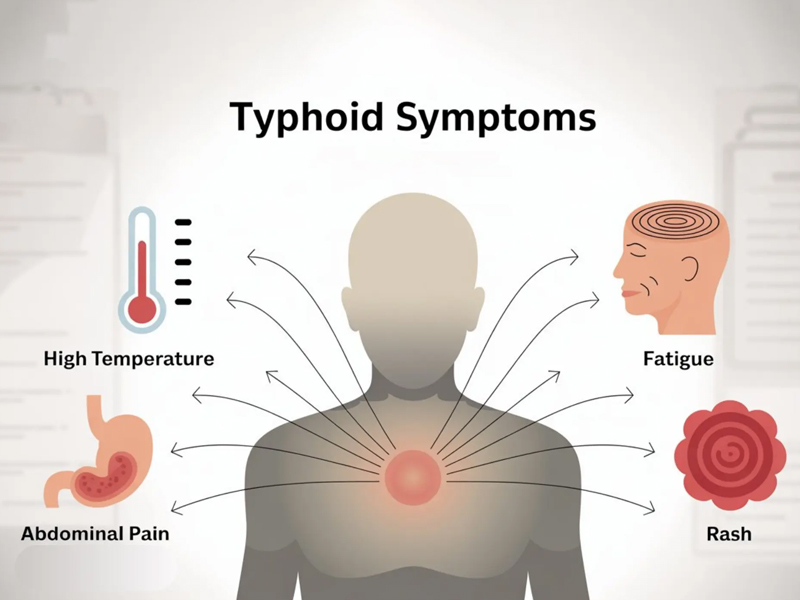Service
Typhoid

Typhoid fever is a life-threatening illness caused by the bacterium Salmonella Typhi. It is typically spread through contaminated food or water and can cause prolonged fever, headache, abdominal pain, and other symptoms. While antibiotics are effective for treatment, increasing antibiotic resistance and the potential for chronic carriers pose challenges.
Symptoms
- Prolonged high fever
- Headache
- Fatigue
- Nausea
- Abdominal pain
- Constipation or diarrhea
- Rose-colored spots on the trunk in some cases
- Enlarged spleen and liver
Causes
- Typhoid fever is caused by the bacterium Salmonella Typhi.
- It is usually spread through contaminated food or water, often in areas with poor sanitation.
- People can become infected by ingesting food or water contaminated with the feces or urine of an infected person.
- Chronic carriers, who may not show symptoms but can still shed the bacteria, also contribute to the spread.
Treatment
- Typhoid fever is typically treated with antibiotics.
- Increasing antibiotic resistance, especially to fluoroquinolones and newer antibiotics, can complicate treatment in some regions.
- Azithromycin and cephalosporins are also used in treatment.
- It's crucial to complete the full course of antibiotics as prescribed and follow healthcare providers' instructions.
Prevention
- Hygiene : Frequent and thorough handwashing with soap and water, especially after using the bathroom and before eating, is essential
- Safe food and water : Drink bottled or boiled water, eat well-cooked food, and avoid raw vegetables, fruits that cannot be peeled, and food from street vendors.
- Vaccination : Vaccines are available and recommended, especially for travelers to high-risk areas.
- Sanitation : Improving sanitation infrastructure and access to clean water are crucial for preventing typhoid fever.
Complications
- Severe cases can lead to serious complications, including internal bleeding, intestinal perforation, and even death.
- Some individuals can become chronic carriers, even after treatment.
